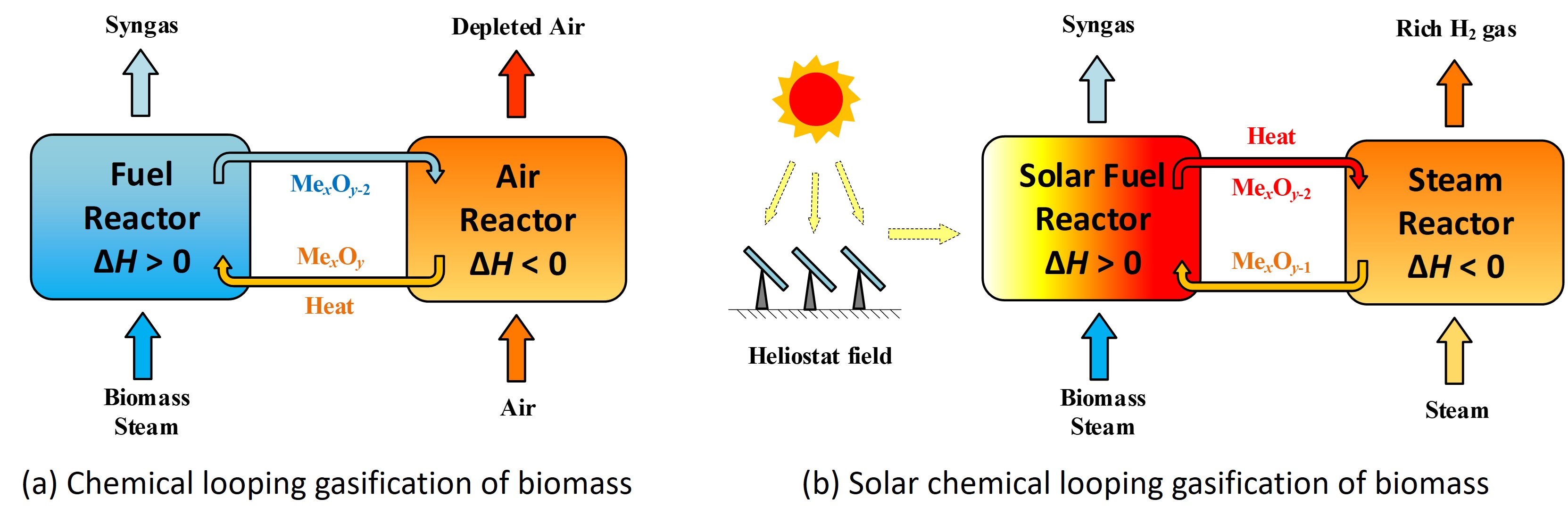(325c) Solar-Driven Biomass Chemical Looping Gasification for Production of Syngas and H2: Thermodynamic Analysis and Proof-of-Concept Experiment
AIChE Annual Meeting
2023
2023 AIChE Annual Meeting
Sustainable Engineering Forum
Concentrated Solar Power Generation and Chemical Processing III
Monday, November 6, 2023 - 4:10pm to 4:30pm
A zero-dimensional thermodynamic model was built to determine the theoretical solar-to-fuel energy conversion efficiency. First law and second law analyses were conducted to examine the effect of various pivotal parameters, including the reaction temperatures in both reactors, the ratio of oxygen carrier to biomass, the solar concentration ratio, and the heat recovery effectiveness, on the overall performance of the proposed system. A proof-of-concept experiment was also conducted in a cavity-type packed-bed solar reactor under concentrated solar radiation emitted by Singapore’s first 28 kWe high flux solar simulator. The results indicated that the solar chemical looping gasification of biomass is a viable method for producing syngas and hydrogen in separate streams, which can be subsequently combined in a specified proportion for downstream chemical processing.
